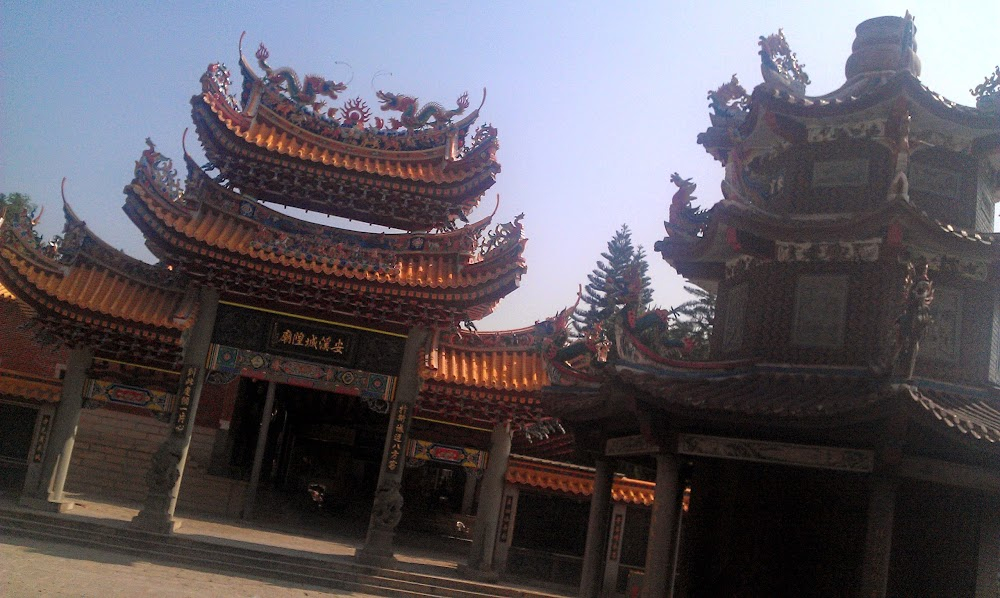...All in This Tea Filming Locations

Where was ...All in This Tea filmed? ...All in This Tea was filmed in 10 locations across China, United States, Nepal and Hong Kong in the following places:
...All in This Tea Filming Locations
Hangzhou, the capital of China’s Zhejiang province, is the southern terminus of the ancient Grand Canal waterway, which originates in Beijing. Its West Lake, celebrated by poets and artists since the 9th century, encompasses islands (reachable by boat), temples, pavilions, gardens and arched bridges. On its south bank is 5-story Leifeng Pagoda, a modern reconstruction of a structure built in 975 A.D.
Anxi County is a county of the prefecture-level city of Quanzhou, in southern Fujian province, People's Republic of China. It lies adjacent to and directly north of Xiamen city. Anxi is well known for a number of varieties of Oolong tea, the best-known of which is Tieguanyin.
Berkeley is a city in Northern California on the east side of San Francisco Bay. It’s home to the University of California, Berkeley, birthplace of the 1960s Free Speech Movement. The 1914 Sather Tower, known as the Campanile, has views of the campus and the bay. The open-air Hearst Greek Theatre stages major concerts. Clustered on and near Telegraph Avenue, south of the university, are cafes, shops and music stores.
California, a western U.S. state, stretches from the Mexican border along the Pacific for nearly 900 miles. Its terrain includes cliff-lined beaches, redwood forest, the Sierra Nevada Mountains, Central Valley farmland and the Mojave Desert. The city of Los Angeles is the seat of the Hollywood entertainment industry. Hilly San Francisco is known for the Golden Gate Bridge, Alcatraz Island and cable cars.
Fujian is a southeastern Chinese province known for its mountains and coastal cities. In Xiamen, a port town and former foreign concession, the island of Gulangyu has pedestrianized streets and 19th-century colonial villas. Fuzhou, the provincial capital, is a transportation hub for destinations such as the city of Quanzhou. Once visited by Marco Polo, it offers temples, an old-town district and a Maritime Museum.
Guangdong (formerly Canton), a coastal province of southeast China, borders Hong Kong and Macau. Its capital, Guangzhou, sits within its industrial Pearl River Delta region. This sprawling port is home to the octagonal Sun Yat-sen Memorial Hall, commemorating the founder of modern China. The city’s colonial history is evident in its garden-lined boulevards and the 19th-century European architecture of Shamian Island.
Nepal, officially the Federal Democratic Republic of Nepal, is a landlocked country in South Asia. It is mainly situated in the Himalayas, but also includes parts of the Indo-Gangetic Plain.
Hong Kong is a special administrative region of the People's Republic of China. With 7.4 million residents of various nationalities in a 1,104-square-kilometre territory, Hong Kong is one of the most densely populated territories in the world.
Marin County is in Northern California, across the Golden Gate Strait from San Francisco. The sprawling Marin Headlands has Golden Gate Bridge views, trails and the 1855 Point Bonita Lighthouse. North are the giant redwood trees of Muir Woods National Monument. Mount Tamalpais State Park’s namesake peak has panoramic views. The Frank Lloyd Wright–designed Marin County Civic Center is in county seat San Rafael.
Zhejiang, a province in eastern China, encompasses a rural interior and urban centers along the East China Sea. The capital, Hangzhou, is the site of picturesque West Lake, with islands, gardens and landmarks such as 5-story Leifeng Pagoda. Wuzhen is notable among the province’s ancient water towns, with stone bridges, restored historic districts and waterways fed by the Grand Canal.
...All in This Tea (2006)
During the 1990s, David Lee Hoffman searched throughout China for the finest teas. He's a California importer who, as a youth, lived in Asia for years and took tea with the Dali Lama. Hoffman's mission is to find and bring to the U.S. the best hand picked and hand processed tea. This search takes him directly to farms and engages him with Chinese scientists, business people, and government officials: Hoffman wants tea grown organically without a factory, high-yield mentality. By 2004, Hoffman has seen success: there are farmers' collectives selling tea, ways to export "boutique tea" from China, and a growing Chinese appreciation for organic farming's best friend, the earthworm.

